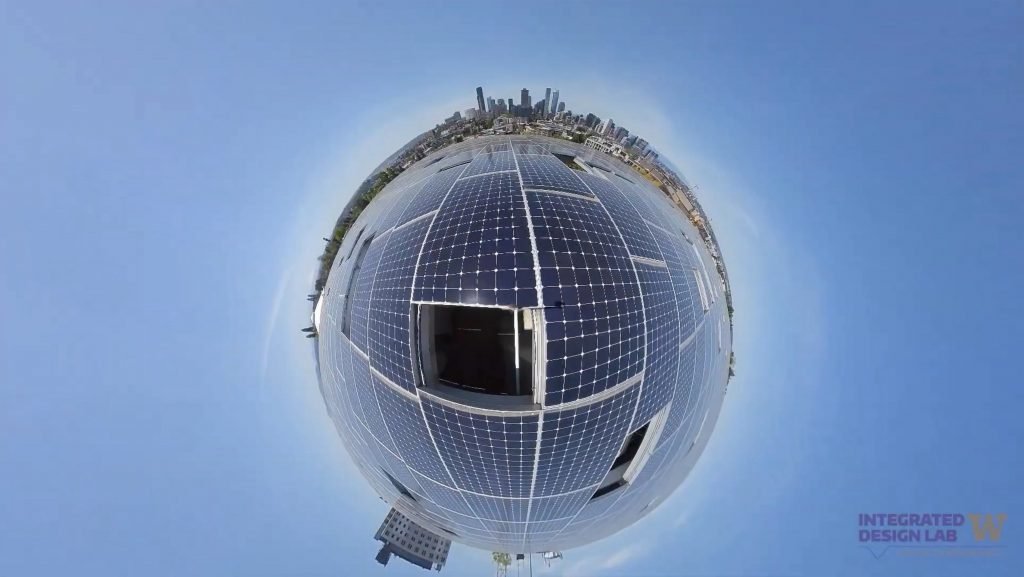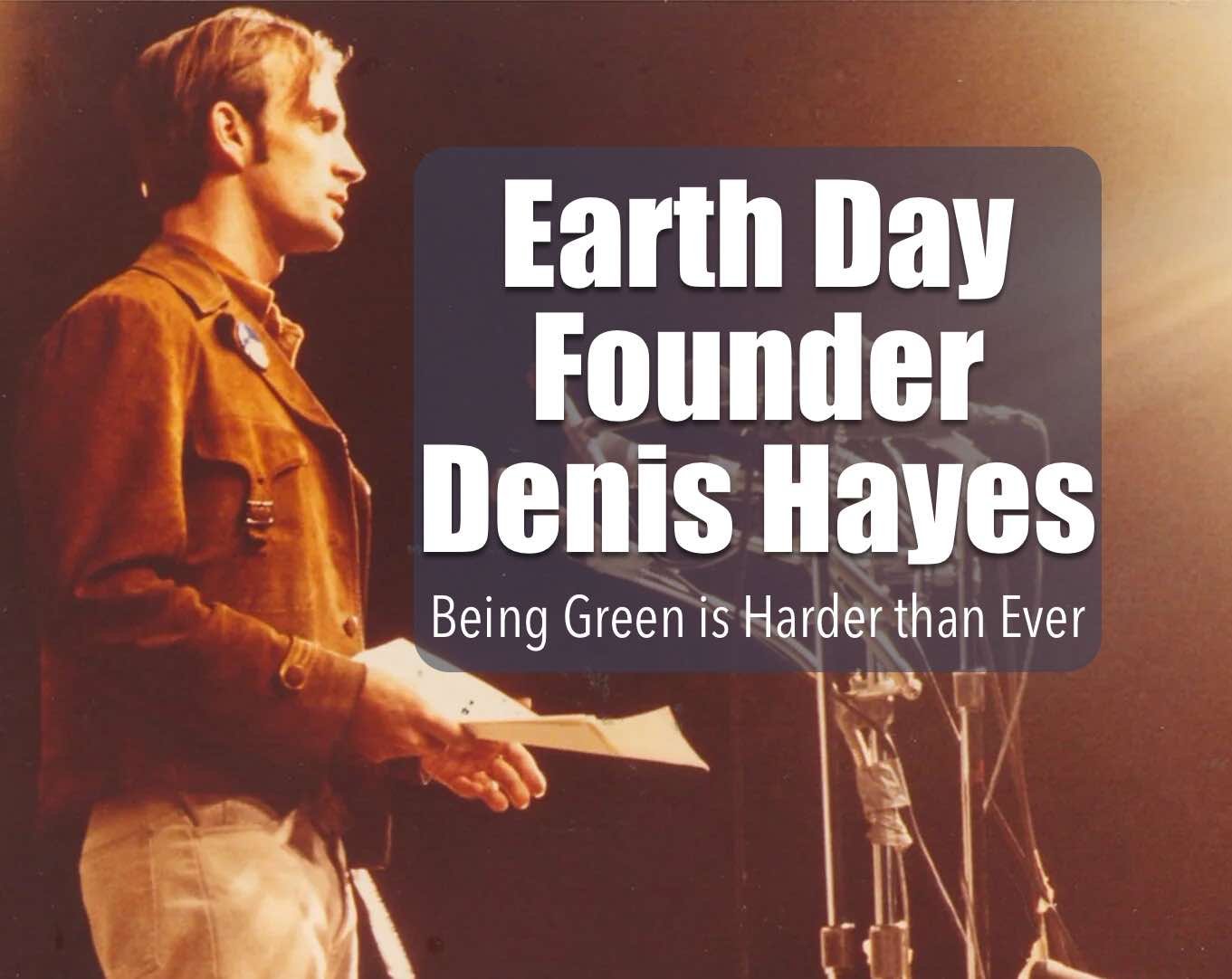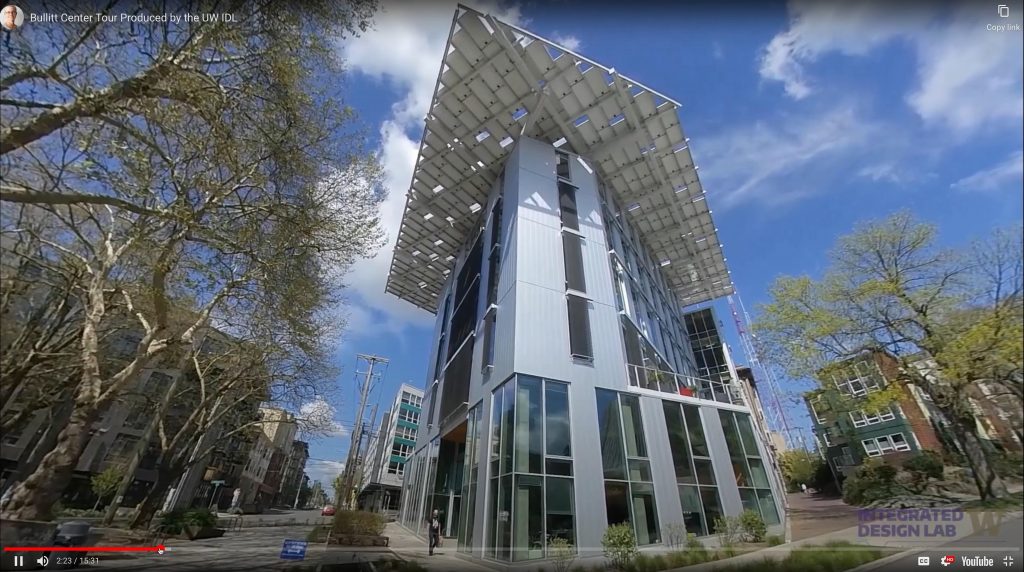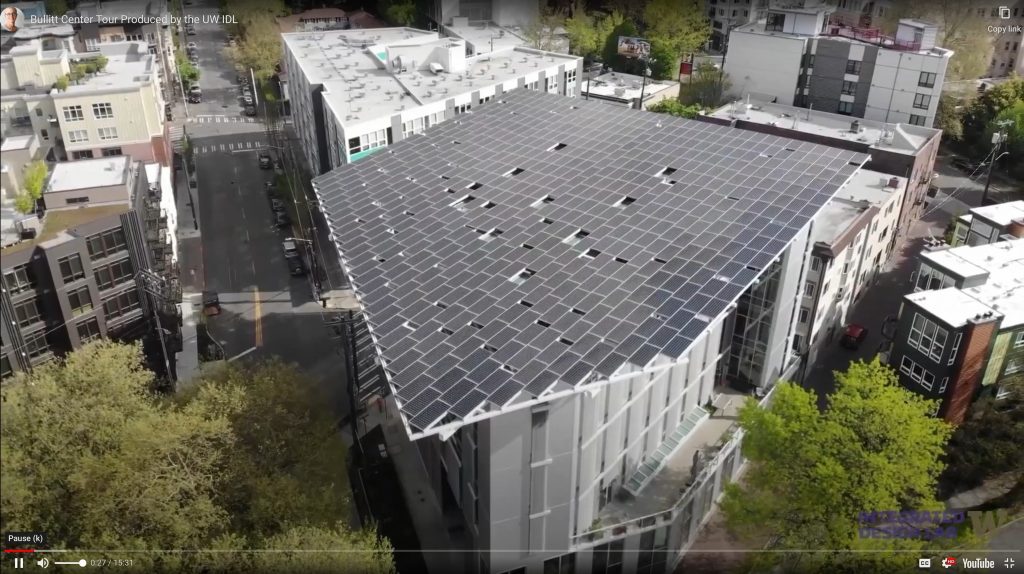By David Dodge, GreenEnergyFutures.ca with Mitchell Beer, The Energy Mix
Has anyone ever wished you a Happy Earth Day? This is so great and so ironic all at the same time. Celebrating the Earth is such a good thing, but let’s face it Earth Day exists because humans have abused the Earth.
April 22, 2023 was the 53rd anniversary of Earth Day, but in 1970 when Earth Day was launched the impetus came from rivers on fire, pollution that was plaguing the skies over American cities, the endangered Bald Eagle and a host of other environmental issues.
But perhaps that is the magic of Earth Day. It’s a mash-up of the world’s biggest environmental issues and it encourages us to celebrate Mother Earth.
In honour of Earth Day we collaborated with Mitchell Beer of The Energy Mix to bring you this special report and feature interview with Denis Hayes, the coordinator of the first Earth Day.
Denis Hayes also founded the Earth Day Network which now includes 180 countries and today he is the CEO of the Bullitt Foundation an environmental grant maker based in Seattle, Washington.
The evolution of Earth Day
Indeed Earth Day has changed a lot since its inception. “The changes are absolutely enormous,” says Hayes. “Communications were all intermediated by largely trusted news sources. So, there was no internet, there was no social media, there was no ability to mobilize,” says Hayes.
“People didn’t really think of energy in 1970. There was oil, there was gas, there was coal, there was nuclear. And to a very, very limited extent, there was solar,” says Hayes.
Hayes says in the early days they encouraged people to “focus on whatever was important to them,” whether it was urban air pollution, saving whales or opposing a freeway.
While energy wasn’t on the radar in connection to climate change it was on the radar thanks to the Santa Barbara oil spill that soiled the beaches of California, killing sea life and outraging the public. Earth Day created a big tent for a host of environmental issues.
“What Earth Day did in that context was it managed to somehow assemble a massive outpouring of public concern. It took all of these separate threads and, and literally hundreds more and wove them into the fabric of modern environmentalism,” says Hayes.
That first Earth Day drew an estimated 20 million participants, but by 2020 Earth Day was observed by more than 100 million people in hundreds of nations.
Climate change began to appear on the Earth Day radar in the late 1970s. And today it’s a common theme.


Scary issues and nasty politics
Climate change is a big issue with dire consequences, but the issue is being played out in times of increasingly polarized politics.
“We have the disturbing trend that has emerged in the last few years – often attributed, not without reason, to subversive activities by the oil and coal and electric utility industries – of a genuine anti-sustainable energy movement,” says Hayes.
You see this in opposition to offshore and onshore wind farms.
“We have these weird claims by, for example, by a former president of the United States that wind turbines cause cancer, with absolutely nothing that would even theoretically be there to underpin it. But you know, he has a huge fraction of America that thinks he speaks truth.”
Climate change requires massive changes and won’t be successful it it replies solely on individual voluntary actions. Hayes says what’s needed is a focused effort not unlike that witnessed in World War II.
What’s needed now – massive mobilization
Pearl Harbour was bombed and “suddenly you unleased a collective spirt that is amazing,” says Hayes. Prior to that the United States was contributing military supplies to European countries similar to the way it is today in Ukraine. But once America was all-in World War II, they retooled factories and focused their collective efforts to help the war and transform American society. This spawned 17 million new jobs, dramatic increases in industrial productivity, and launched aggressive consumerism – ironically these are also the seeds of serious environmental problems.
Hayes says it’s only been in the last five or six years that we have begun to see the “Reporting of hurricanes, tornadoes, droughts, floods, devastations in polar regions, the melting of glaciers all of this now starting to carry a climate patina.”
“At some point, I think that just becomes a tilting point where people say, we just can’t do this anymore.”
It’s not easy being green
At his day job Hayes works with the Bullitt Foundation which built the Bullitt Center which has been described as “Greenest Commercial Building in the World.”
This solar powered net-positive energy building is made of wood, harvests all of its own water from nature, is heated by geothermal ground source heat pumps and has composting toilets.
But as Hayes recalls the process of building the project was torture as they struggled to make the project work within building codes, city bylaws and with an uncooperative utility. Their vision was to create a model of sustainability and efficiency and pave a regulatory pathway for others in the process.
“We’ve had incredible difficulty working with the utility in Seattle to get them to apply this. I think we now have 12 or 15 buildings in Seattle” after more than a decade of work.
This brings pause to Hayes and many others when you realize all buildings will eventually need to be net-zero in order to stave off the most calamitous impacts of climate change.
The net-zero challenge
This is a really big challenge, but there are many other efforts in many cities and countries.
Building codes in some jurisdictions are now plotting pathways to net-zero. The Netherlands is renovating old energy inefficient buildings to net-zero enmass with something called EnergieSprong. And in the California Realize-CA is working with the owners of 60,000 units to renovate them to net-zero using Energiesprong inspired strategies.
As Earth Day co-founder Denis Hayes reflects on his 80+ years on the planet, his full interview with Mitchell Beer of The Energy Mix is a wee bit pessimistic in tone. “I’ve allowed myself to be slightly more bleak than I probably should,” he says near the end of the interview.
He bemoans the framing of the climate issue as a 1.5-degree existential cliff, after which humans fail to exist.
“Use the goal as a motivator, but if it becomes absolutely clear, and frankly for me it’s clear we’re not going to hit 1.5 [desgrees], that’s not the end of the world. That’s a failure,” says Hayes. But “It’s like the opposite team just scored a touchdown, but the game is still on.
“You’re still playing. Let’s get 1.6, let’s get 1.8, let’s get just as much as we can, as fast as we can. Let’s get out there and fight for this.”
Our thanks to Mitchell Beer of The Energy Mix for conducting the interview and for this collaboration of independent media. Here is a link to their coverage.
-30-



